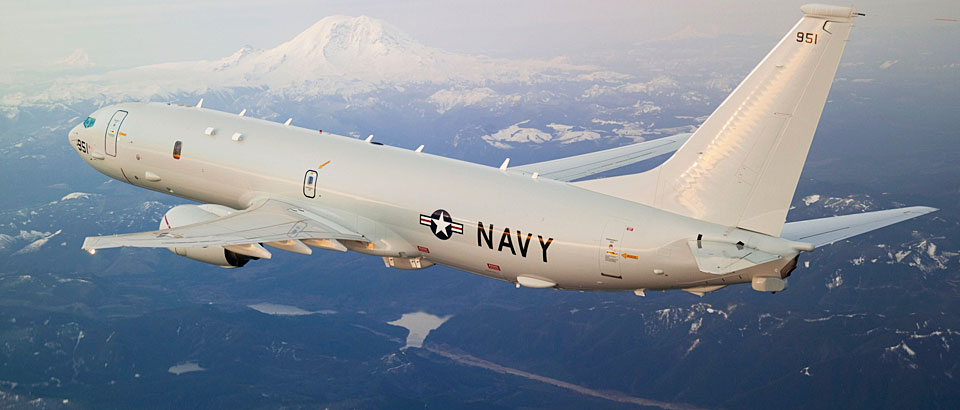US Expands Icelandic Airfield For Tankers, Big Cargo Lift
Posted on

US Navy P-8 Poseidon
THE PENTAGON: The US is planning to expand and upgrade runways and construct temporary housing for troops at an Icelandic airfield in the coming months, part of a wider effort to boost the US presence in key maritime passageways into the high north, where Russian and Chinese activity has caught the attention of NATO.
The plans, outlined in documents posted to a government contracting Website on July 17, build on a previous effort to begin flying more P-8 surveillance sorties from the same airfield.
The Navy’s official request for proposal, expected to be released on August 1, includes three major projects at Naval Air Station Keflavik, including a $27.8 million effort to expand the apron at the airfield to support “operations for a squadron of US Air Force or North Atlantic Treaty Organization (NATO) aerial refueler equivalent aircraft,” along with airfield lighting. Another $15.6 million project would build a new Dangerous Cargo Pad able to handle aircraft as large as a C-5 Galaxy cargo plane, and the final bit of work revolves around a $6 million project to clear a 40,000 sq. meter troop housing area, surrounded by a security fence.
The new work adds to a growing list of US-funded projects at Keflavik, where the Navy has already spent about $36 million over the past several years to renovate hangars to accommodate American P-8 surveillance planes, which have started using the base more frequently for short rotations. It is also regularly used by both the US and NATO fighter aircraft patrolling the far north.
The area around Iceland, dubbed the GIUK Gap — for Greenland, Iceland and the United Kingdom — is a key location for Russia’s northern fleet to enter the Atlantic Ocean, and gives US and NATO aircraft a place to refuel as they conduct their own missions and monitor increasing Chinese activity in the Arctic.
Iceland’s location near the Arctic has taken on renewed importance to Washington and its NATO allies as global warming continues to eat away at the polar ice cap, allowing more shipping through huge swaths of previously ice-covered ocean. Not only has Russia become more active in the region, but China has gone on an ice breaker building spree and declared itself — without any legal or geographic ‘justification — a near-Arctic State, and is operating more regularly in the Arctic in search of natural resources and new shipping routes.
The Pentagon’s annual assessment of Chinese military strength released earlier this year pointed out that China published its first Arctic strategy in 2018 that promoted a Polar Silk Road.
Just last month, NATO Secretary General Jens Stoltenberg visited the Icelandic base, lauding its “strategic location in the Atlantic [which] helps to bind Europe and North America together.”
The money for the work at Keflavik will be pulled from the European Defense Initiative, a $5.9 Pentagon fund in the that pumps money into infrastructure projects and joint training in Europe.
Last year, the Navy indicated it would like to begin flying submarine-hunting P-8 Poseidon aircraft from Adak Island hundreds of miles off the Alaskan coast in the Aleutian island chain, which would put US aircraft at the westernmost airfield that can handle passenger aircraft in the United States.
Formally known as Naval Air Facility Adak, the small airport has been operating commercially since the Navy moved out in 1997. Increasing Russian and Chinese activity in the Arctic drove the Navy to look at new patrols as it searches for ways to keep a closer watch on the far north.
Subscribe to our newsletter
Promotions, new products and sales. Directly to your inbox.
